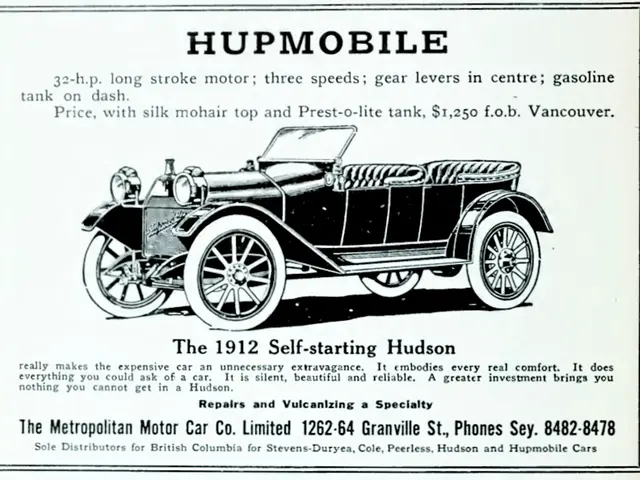Revving Up: The Dirtiest and Cleanest Cars Across Germany - A Region-by-Region Analysis
Filthy Vehicles Dominate Roads in Wendland Region - Filthiest Automobiles Are Most Prevalent in Wendland Region
Let's dive into the world of exhaust emissions and see where the cleanest and dirtiest cars in Germany reside. The latest report by dpa, based on data from the Federal Motor Transport Authority (KBA), reveals some truly intriguing results.
The cleanest cars across the nation can be found in lower Saxony. However, surprisingly enough, not all parts of this region are as green as the others. For instance, controversial Wendland, located in Lüchow-Dannenberg, stands out with a 33.7% share of vehicles compliant with the older and looser emission standards (Euro 1 to Euro 4). In the race for the dirtiest cars, Nienburg and Salzgitter follow close behind with approximately 30% each.
A stark contrast can be seen in Wolfsburg, where the share of outdated vehicles drops to 10.9%. It's worth noting that this city boasts a clear advantage as a major automotive hub, with a diverse range of relatively new self-registrations and company cars, not to mention special conditions for new vehicle purchases for its VW employees. This significant workforce, including around 60,000 employees and approximately 130,000 residents, plays a significant role in tipping the scales towards cleaner cars.
Statistically, there are nearly a thousand cars per 1,000 residents in Wolfsburg - more than one car per adult. Moreover, some of these cars may not even be registered in the exact district where they are driven.
When it comes to the cleanest cars, car cities (like Munich, Ingolstadt, and Stuttgart) tend to shine. By incorporating the proportion of electric cars and vehicles adhering to the relatively new Euro 6 standard, Wolfsburg leads the pack with an impressive 77.2%. Munich takes third place (BMW), Ingolstadt slots into sixth (Audi), and Stuttgart settles in seventh (Porsche and Mercedes).
Factors such as income might also play a part in the distribution of clean versus older cars. In prosperous areas, there's a higher likelihood of new, cleaner vehicles being purchased. However, the exact influence of income on vehicle distribution remains unclear without specific regional data.
For those interested in diving deeper into the exhaust emissions saga, it's essential to note the difference between emission standards across Europe. The Euro Standards range from Euro 1 to Euro 6, with the most stringent standard being the Euro 6, requiring significantly lower emissions than those prior. Moreover, Germany has implemented low-emission zones in various cities requiring vehicles to meet specific emissions standards.
Though specific data on the distribution of cleanest and dirtiest cars by emission standard in Wendland, Nienburg, Salzgitter, Wolfsburg, and Brunswick is scarce, it can be inferred that car cities tend to harbor a higher concentration of newer, cleaner vehicles due to stricter emission controls and the presence of major automotive industries. On the other hand, rural or less populated areas might display a higher percentage of vehicles complying with older emission standards. This discrepancy could be due to weaker enforcement or fewer restrictions in the less regulated regions.
Local government reports or environmental studies would shed more light on the precise distribution of cleanest and dirtiest cars by emission standard in these specific areas. By staying informed on the state of vehicle emissions across Germany, we can all contribute to a cleaner future and better air quality for everyone.
- In the discussion of exhaust emissions and clean versus dirtiest cars across Germany, it's crucial to acknowledge the role of community policies, particularly those relating to automotive industries, in influencing the distribution of these vehicles.
- Employment policies, especially those providing special conditions for new vehicle purchases in major automotive hubs, significantly impact the proportion of cleaner cars in a region.
- The science of environmental science and the field of climate-change provide valuable insights into the environmental impact of various vehicles and the need for stricter emission standards (such as Euro 6) to minimize hazardous emissions.
- The finance and energy industries could potentially collaborate with local governments to offer incentives for the adoption of electric vehicles, contributing to a cleaner environment and aiding in the fight against climate-change. In addition, the transportation industry, specifically the automotive sector, should continue prioritizing innovation and development of cleaner, more energy-efficient vehicles.








